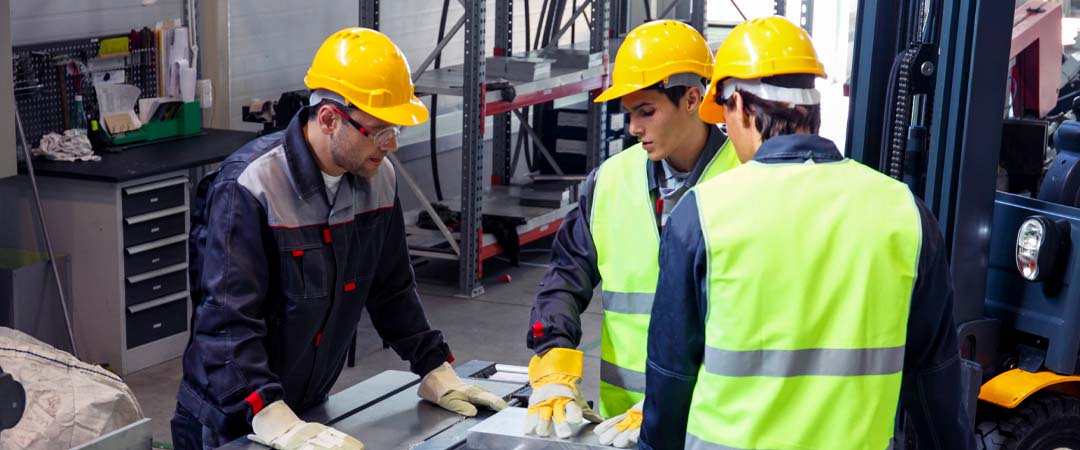By Gary Loberg, Category Analyst – Electrical Consumables & MRO

There are countless safety measures that employees working in a machine shop must take. Depending on the various machines in use and the materials involved, these safety measures could change.
However, there are some standard safety practices all machine shops and shop workers must follow to avoid injuries:
1. Train all employees extensively.
Every person working in a machine shop must be trained on the equipment present, even if they may not use it frequently.
A thorough knowledge of tools and parts is necessary to maintain high-quality safety standards. All employees should be well-versed in emergency protocols and shop terminology, so they can take action if needed.
2. Wear personal protective equipment.
PPE provided by the employer should meet all safety standards established by the Occupational Safety and Health Administration. According to Safety Services Company, the most important types of gear include:
- Goggles – Wearing goggles while operating machinery protects eyes from flying debris and sparks. This is true even for workers not operating machines, as others engaged in work could cause debris to fly.
- Gloves – Gloves should be worn to protect skin and nails, especially if workers are using harsh chemicals. Thick gloves can also protect against rust or cuts from tools.
- Respirators – In workshops with potentially harmful fumes, OSHA-compliant respirators should be worn by all employees.
3. Do not wear hazardous clothing.
While PPE is required, you should actively avoid some clothing items in a machine shop for safety purposes. The following items could drastically increase the potential for injury:
- Loose-fitting clothing – Anything too loose could be sucked or fed into a machine or caught on equipment.
- Open-toed shoes – Articles or shoes that expose the body must be avoided as they increase the surface area exposed to harmful chemicals, tools and fumes.
4. Never force machines to cooperate.
Sometimes, stubborn machines may feel stuck, and you may be tempted to force materials into or out of them. This is highly dangerous and could result in a machine malfunction. Feeds should be operated as intended, not forced to speed up or slow down.
5. Never work alone.
Working in a machine shop alone is dangerous, as there is no one to help you if a machine backfires or something goes wrong. Always work with a team of trained professionals, as recommended by Harvard’s Environmental Health & Safety Department.
6. Keep walkways and exits clear.
Paths between machines and all exits must be clear. This eliminates the potential that an employee trips on tools or is unable to exit in the event of an evacuation or emergency.
7. Keep workspaces clear.
Worktables must be clear of debris, garbage, extra tools and more during working hours. Any clutter can become a safety hazard in an instant. Every item in a machine shop should have its designated place and remain there unless directly in use.
8. Inspect machines before each use.
Prior to using any machine, workers should inspect it for hazards. Make sure the previous user shut down the machine properly and there are no exposed sections, parts or wiring that could cause malfunction. In addition, once in use, keep ears open for any noise signaling that the machine is operating incorrectly. Strange sounds could indicate a problem.
9. Leave machines clean after use.
After using a machine, aim to leave it better than you found it. This means inspecting thoroughly to ensure the machine has been turned off properly and completely, along with cleaning all parts that may have been dirtied in use. Excess debris buildup can decrease a machine’s functionality over time.
10. Report all injuries to management.
In the unfortunate event that an injury does occur, it must be reported to management. Even small instances that may seem insignificant should be reported, as any recurring problem could be a cause for an inspection of certain machines or parts.
Read more:
What the Five Types of Safety Controls Look Like in Practice
How to Determine Which Cut-resistant Glove Rating is OSHA Compliant for Your Job Site
Cutting Taps vs. Forming Taps: What You Need to Know
6 Steps to Lockout/Tagout (LOTO) Maintenance: A Fundamental Guide